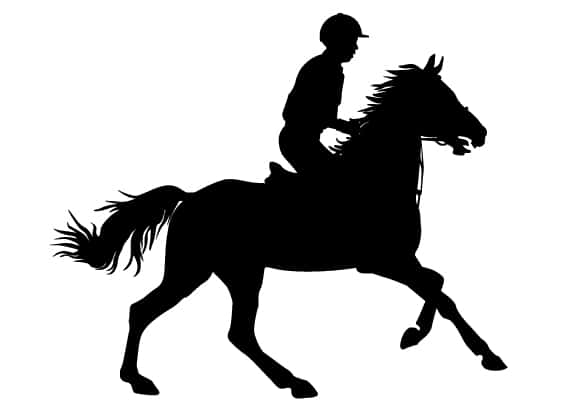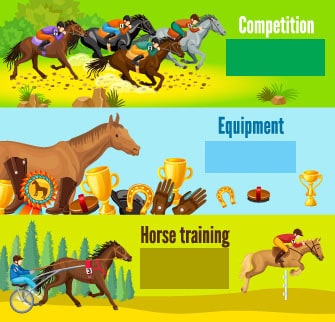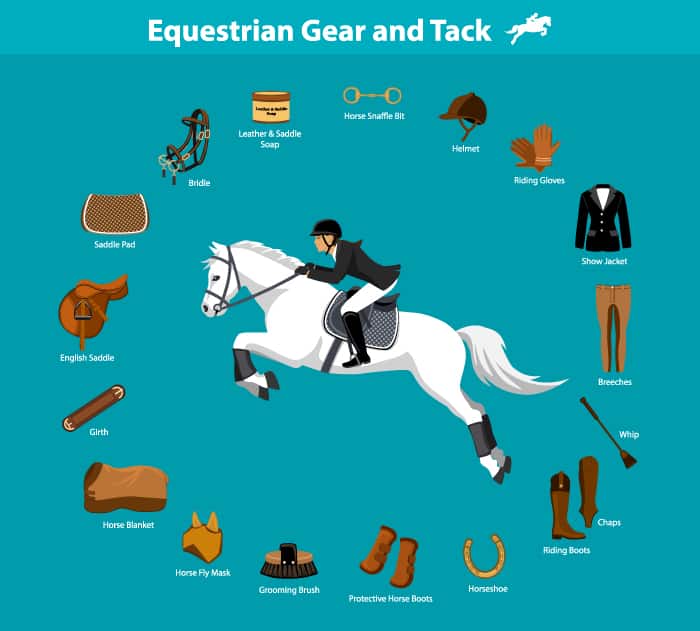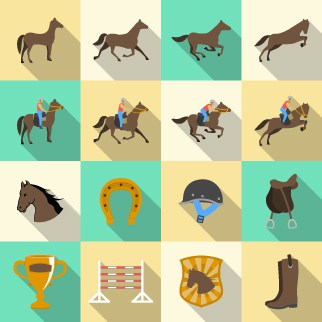[Guest Blog] Equestrians And Diabetes

Before we continue with this article, I wanted to let you know we have researched and compiled science-backed ways to stick to your diet and reverse your diabetes. Want to check out our insights? Download our free PDF Guide “Power Foods to Eat” here.
Kelly’s story
Before heading out on a long trail ride, Kelly would check her blood sugar in the tack room. Sometimes, she would eat a snack, and sometimes she wouldn’t. She took insulin injections. One time before going on a particularly long ride through a mountain gorge, Kelly stopped her horse on the trail, pulled out her glucometer, and tested her blood sugar. She then gave herself a small injection of insulin, and we rode up the mountain gorge, with no incident.
One summer, with a group of summer campers, things on our trail ride went the wrong direction, and quickly spiralled out of control. I was on the lead, and Kelly had the camper’s backs. She was riding behind the last of six campers at Greencove, taking up the lead, as we followed the creek, down the mountain; each horse carefully placing each hoof, so as not to slip, and slide down the steep bank. It got so steep, we all had to cut an angle down and across the mountain. Briars were thick, and we were moving slowly.
My horse’s hoof came out first, landing squarely in a hole, until he sunk down to his knee, with his leg lost in the hole. Out came the swarm of bees, quickly like an army, up the line of horses; riders flying off, reins waving in the air, horses rearing and bucking, and running off down the gorge. It all happened so fast. I looked behind me where I saw campers and Kelly running through the woods, swatting at ground bees hot on their heels.
After we had all calmed down, rounded up the horses, and treated our bee stings, Kelly realized how long it had been since she had last eaten. She was feeling a little weak. She checked her blood sugar, and sure enough, amidst all the commotion, Kelly’s blood sugar had dropped to 50 mg/dl. Kelly took three glucose tablets. After an hour, we cooked spaghetti over the campfire, as we settled in to sleeping bags and tents under stars, with horses in the paddock nearby.
In all the times I rode with Kelly, she never had another incident related to her diabetes and horseback riding. The moral of Kelly’s story is that it doesn’t matter if you have diabetes or not, you can still go horseback riding. Sure, there is extra planning that goes into it, and steps you must take to stay safe on long rides, but it is all worth it.
With careful planning, and a few tips in your pocket, you can be an Equestrian with diabetes. You could pleasure ride, compete in events, dressage, jumping competitions, fox hunts, or any number of enjoyable riding activities. It’s good exercise, too. We shouldn’t underestimate the power of exercise to bring our blood sugars in control.
One thing to bear in mind, though, is that horseback riding, and horses, are very expensive.
Types of horse back riding
 |
The two main types, and sub-types are:
- English
- English pleasure
- Eventing
- Show jumping
- Saddle seat
- Horse Racing
- Endurance riding
- Fox hunting
- field trials
- Western
- Western pleasure
- field trials
- Rodeo style riding
- Reining
- Cutting
- Barrel racing
- Gymkana
Types of English horseback riding
English pleasure
- Western pleasure
- field trials
- Rodeo style riding
- Reining
- Cutting
- Barrel racing
- Gymkana
Types of English horseback riding
English pleasure
This type of riding is basically pleasure riding in an English saddle. My favorite type, I prefer to feel the horse with my legs while riding. An English saddle has less padding than a western saddle. Therefore, the rider can feel the horse underneath, and the horse can respond to cues the rider gives.
Dressage
Dressage is great for the rider and horse being in touch with one another. Dressage is an old art that goes back centuries. The International Equestrian Federation named dressage as an official equestrian sport. Dressage is an event at the Olympics, and at the World Equestrian games. Together, the horse and the rider perform movements in an arena, and judges score the movements for 0-10. . The rider will use their legs to “bend” the horse. They are both are very much in touch with each other during dressage. Dressage brings out the natural athlete in the horse, and subtle aids by the rider keeps the whole process looking smooth and fluid.
Eventing
Horse eventing is also known as horse trials, where the horse and the rider team compete in three areas:
- Dressage
- Cross-country
- stadium jumping
Dressage
Dressage is great for the rider and horse being in touch with one another. Dressage is an old art that goes back centuries. The International Equestrian Federation named dressage as an official equestrian sport. Dressage is an event at the Olympics, and at the World Equestrian games. Together, the horse and the rider perform movements in an arena, and judges score the movements for 0-10. . The rider will use their legs to “bend” the horse. They are both are very much in touch with each other during dressage. Dressage brings out the natural athlete in the horse, and subtle aids by the rider keeps the whole process looking smooth and fluid.
Eventing
Horse eventing is also known as horse trials, where the horse and the rider team compete in three areas:
- Dressage
- Cross-country
- stadium jumping
Eventing usually lasts three days; therefore it is a rigorous and physically-intense type of horseback riding. People with diabetes will need extra planning, and careful consideration to control diabetes during brisk eventing.
Show jumping
Show jumping is what I have the most experience in, as I grew up on the “B” show circuit in NC, competing in places like Tryon, Linville, and Raleigh. Show jumping is exciting. It gets the adrenaline pumping. People with diabetes will need to stay in tune with their bodies during these high energy and stress horse shows. There are three categories of horse jumping in shows:
- Hunter – judges look for overall manner, and style
- Jumper – judges score in a timed trial, horses are faulted for not clearing the jump
- Hunt seat equitation- only the rider only is judged, on the flat, and over fences
Saddle Seat
Tennessee Walking Horses, American Saddlebred horses, Morgan, and Arabians, are judged in saddle seat, on movements in the walk, and the “running walk”, which are all characteristic of the Tennessee Walker and Standard bred horses. Horses are also judged at a canter. These horses are given very large shoes, so that they will pick their feet up high, and look festive the way that they prance with their large shoes.
It’s very smooth to ride saddle seat. You will hardly feel the horse moving underneath you. I used to ride Paso Fino’s saddle seat, and wore a flat black hat, with a glass of champagne atop, and went around the arena ten times without spilling a drop! If you don’t prefer a choppy trot, ride a horse with a running walk.
Horse racing
An English style saddle is used for horse racing, and it is certainly a type of horseback riding that could cause stress, and adrenaline/epinephrine responses. Most races are usually quick, so with careful consideration, you could race with diabetes. A performance sport, horses are “jockeyed,” by riders, and race over a distance. This type of horseback riding event has been around for centuries, and goes back as far as history.
To be involved in horse racing, jockeys must be in tip-top shape, and able to maneuver atop of a large animal, at speeds up to 45 miles per hour. Racing is expensive, and is one of the richest sports, so finances are important.
Endurance riding
With endurance riding, races are a longer distance. This is an international competition, and includes riding long distances for races, trail riding races, and other endurance rides
Fox hunting
Traditional fox hunting has been banned in England, Scotland, and Wales, but is still allowed in Northern Ireland, the United States, Canada, France, Italy, and Australia. The traditional form involves riders on horseback following hounds who are chasing a real fox. The “Master of Hounds,” follows the dogs on foot or on horseback.
A more civilized version of fox hunting, which is what I used to do, is a drag hunt, where the hounds follow the scent of the fox, not hunt down the living fox. A real fox hunt can be quite brutal, when the hounds catch up with the fox.
Field trials
Field trials are a lot of fun, and I used to do these with my dad around Mocksville, NC. This is where a team of riders follow hunting dogs while they chase the scent of a fox, or cayote. The hounds are a big part of the field trials. Mostly, we went on these “drag hunts,” and not on live hunts, where packs of dogs chase a real fox. The winners gain points, and eventually trophies.
Types of Western horseback riding
Western Pleasure
Western pleasure riding is when you trail ride with a Western saddle, Western-style. It also means Western Pleasure showing in competitions. The horses are evaluated on quality of movements in the walk, lope, jog, and reverse by judges.
Field TrialsField trials are also done in Western style, and in my experience, you can ride whatever style that you like best in a field trial. A field trial is not so much about the style of horse and rider, as it is about having fun watching the hunting dogs try to locate the scent of a fox or other animal.
Rodeo
American style rodeos include several different types of competitions, some involving horses and some that do not. Bronc riding, bareback riding, and barrel racing are the three main events that involve horseback riding in a rodeo. Generally, rodeos involve physical horseback riding, and may be dangerous when riding broncos, and racing. Bronc riding, with roots in the Old West, involves the rider hanging on until the bronco can buck the rider off.
Reining
Reining is for ranch horses in a show ring. As per the National Reining Horse Association (NRHA), each horse picks one of ten reining patterns to do for the judges. The horses form small and large circles, flying lead changes, and spins in place, with sliding stops, as the rider shows how he or she can guide and control the horse for the judges. The horse should not show resistance to the rider during reining competitions. The American Quarter Horse Association started the reining sport, to mimic cattle horses. It is the only Western type of riding that is part of the World Equestrian Games.
CuttingCutting is a rodeo Western event competition. The horse/rider team goes before a panel of judges, with a 2.5 minute “run,” that shows how the horse can handle cattle. Cutting has been around since the days of the Old West.
Gymkhana
The Gymkhana is an event for horses and riders that consists of pattern speed racing, and other games. These are often promoted by local 4-H clubs in the US and are considered to be games on horses. These events involve children, and they are for beginners to showcase what they have learned about horseback riding. Events can include barrel racing, bending poles, keg race, keyhole race, stake race, or races involving flags. Riders demonstrate their horsemanship skills in a variety of ways, including flying lead changes, and sliding to a stop. (1)
Horseback riding can be dangerous!
 |
That being said, riding with diabetes can be even more dangerous if you were to have a low or high blood sugar while riding. This can compromise your mental and physical capacities for controlling your horse, and eventually lead to an injury.
Health benefits of horse riding for diabetes
 |
We know that horseback riding can be vigorous, and is a good way to get exercise and activity in an enjoyable manner. What are some of the health benefits of horseback riding, assuming we take measures to stay safe while riding horses with diabetes?
Mental benefits of horseback ridingResearch shows that horseback riding can be an exercise that reduces stress. Interactions with animals, in general, have been found to reduce stress, and depression in humans. I can attest to the benefits of owning and taking care of horses. For a little girl, a horse may become her best friend, as Joe Cool was for me.
Horses and riders bond through various other ways than just riding. Even if you don’t ride, you can enjoy the mental benefits by caring for them, brushing, and talking to them. Barn work is physical work. You will be mucking out stalls, pitchforking hay, and walking horses for cool down. You can get a lot of exercise without ever leaving the barn.
There are many therapeutic riding programs available, that use horseback riding to decrease stress among children with disabilities, or people with chronic illnesses. The healing and calming properties of horses are something that you must experience to know what I am talking about. They have also been known to decrease anxiety levels.
Physical benefits of horseback ridingIt may seem that riding a horse is not much of a physical sport. People who have never ridden a horse assume that the horse is the only one doing the exercise. The truth is that riding a horse burns up plenty of energy in the form of calories. Even a trail ride at a walk for an hour will burn 150 calories. More vigorous styles of riding, such as eventing, racing, or field trials, will burn off even more energy.
Therefore, if done several times a week, horseback riding can be an additional compliment to an activity program, and provide an enjoyable way to get you moving. If you are a bit timid around horses, try to start by offering help at a local barn, or at a horse rescue or shelter.
Research related to the benefits of horseback ridingJapanese researchers studied the effects of horseback riding on diabetes. As far back as 3,500 years ago, horses were known to benefit those with diabetes by bringing blood sugars closer to normal. These benefits were confirmed by researchers in Japan, who documented increased insulin sensitivity and increased metabolism in Type 2 Diabetes patients using a horse riding simulation. In those with Type 1 Diabetes, the research showed that these patients had a decrease in the amount of insulin they required with horseback riding in comparison to other kinds of activity. Type 1s also showed increased sensitivity to insulin. The researchers found that horseback riding involves all available muscles in the body, and includes aerobic exercise, balance, strength, and coordination.
Increased insulin sensitivity can last up to 48 hours after activity. It was also found to raise metabolism of lipids, which in turn was beneficial for people with diabetes. Oxygen consumption by muscle groups, and the use of all muscle groups in activity is desired, and horseback riding was found to provide this type of workout using all muscle groups.
The most outstanding finding in the Japanese research was that people with Type 1 diabetes, who performed simulated horseback riding on a machine for 60-120 minutes per week, had a drop in the amount of insulin their body needed by 40%. That’s a huge drop in insulin needs, which suggest that if you haven’t yet, you then should start riding horses. In the study, people with Type 1 diabetes, who didn’t perform exercise or horseback riding, had a decrease in insulin sensitivity by about 70%. Now there’s a reason to hit the trails! (2,3)
Tips for horseback riding with diabetes
 |
Check your blood sugar levels before and after your rideAs Kelly used to do, check your blood sugar about 30 minutes before you ride, and just before your ride. If your blood sugar was at 140 thirty minutes prior to your ride, but has dropped 20 points by the time you test before your ride, you are then trending towards lower blood sugars. After the ride, check your blood sugar again, and treat accordingly. Make sure that you’re not trending towards a low blood sugar following a long trail ride.
Reduce insulin before the ride, and go on long rides with blood sugar a little highIf you know that you will be on a very long ride, talk with your doctor about reducing your insulin a little before you go out on the trail. You could also go out with your blood sugar a little on the high side, say 180 mg/dL, to help you avoid a low blood sugar while horseback riding.
Always have a quick acting carb with youKeep some quick-acting carbohydrates on you during your ride. You could carry glucose tablets, peppermints, lifesavers, or glucose gels, which fit into your pocket. If you have a saddle bag, you could pack juice boxes, protein snacks or other carbohydrate to take with you. If you are gone on a long ride, you may need to prepare a picnic meal, or combine several snacks into a small meal. For long rides or overnight camping trips with horses, some people will ride with a small backpack if they carry provisions.
Take care of your pump and CGM while ridingCertain insulin pumps, like the Omnipod, seem to be preferred by equestrians with diabetes. With the absence of tubing to get in the way, it’s a good choice for equestrian activities. For eventing and other competitions, the Omnipod has a good cushion to it that protects the pump. It’s like a small bandage on the arm or abdomen, but you can place the Omnipod in other places on your body.
If you were to fall off your horse, and roll over on the Omnipod, chances are it would come out just fine. Horse enthusiasts who have tried the Omnipod have found that it stays securely in place during horseback riding activities, even high endurance ones. You can also use ace wrap or veterinarian wrap around your Omnipod site while you ride. It works great for protection. (4)
Animas 2020 has been known to be a touch insulin pump that is good for horseback riding, but all Animas pumps will soon be replaced with Medtronics. There have been several safety recalls with the pumps; therefore, the company has decided to stop manufacturing them. All patients will transition to Medtronics pumps over a period of time. Medtronics is a tough pump on it’s own, though.
Many riders have experienced that their pumps, or their Continuous Glucose Monitor (CGM), come out, and is overstepped by a horse. You will need to keep your insulin pump, and tubing if your pump has it, along with your CGM, safe while riding. CGMs will function within 20 feet of the receiver, and if they get too far, they will reconnect when they get close enough.
The website www.tallygear.com has a line of products that may help you keep your insulin pump and CGM safe while riding. The CGM waist pack is available in several sizes, and will keep your CGM tucked neatly against your body while riding horseback. They also offer insulin pump cases, with a handy clip.
Also, if going out for some intense training on horses and blood sugars are in a reasonable range, some competitive riders will disconnect their insulin pump so that they don’t go low during training or eventing.
Always ride with a buddy who knows about your diabetes and will act appropriately in case of an emergency
Riding solo is not the best idea when you have diabetes. It’s recommended that you bring a buddy, who knows about your diabetes, and how to treat a low blood sugar in the case of an emergency. You wouldn’t want to have low blood sugar when you are out alone on a trail, isolated from any help. Have your buddy carry extra carbohydrates for you, or some of your diabetes and first aid supplies. This way, you will have someone who can help you if you are injured, and who can go for help if needed.
What to do in the event of an emergency?
 |
Treating injuries or scabs you may get from riding
 |
Bring your medications and other supplies in a bag with youIf you have an insulin pump, it’s a good idea to bring at least one extra set with you on a long ride. For several days of eventing, you may need several extra pump sets. You should carry your glucometer, and all supplies, including any medications and carbohydrates, that you may need on your ride. If you have a glucagon pen, pack it; and show your buddy how to use it in case of low blood sugar.
Wear proper attire, and a helmet while riding, and wear a medical ID braceletGeneral safety when riding a horse requires that you wear a helmet. Other protective attire can be “chaps,” which are suede or leather leg coverings that protect your legs and knees in a fall, and tall boots which protect feet, ankles and lower legs, and allow you to get a better grip on the sides of the horse form your English saddle. Also wear a medical ID that says you are on insulin, or have diabetes. It’s important if something does happen, and you are knocked unconscious, medical personnel or others are alerted of your diabetic status.
Good careful planning will make for a smooth, safe, and above all, enjoyable equestrian experience.
Plan events to raise awareness and money for diabetes at your barnIf you ride at a local barn or stable, why not use your influence to raise money for diabetes causes, or to raise awareness about diabetes in general? You can plan a horse show or Gymkhana. Having your stable mates understand your diabetes, as well as get better awareness of the disease itself, will only help you to stay safe while riding. At the same time, it can help others. Many stables have done diabetes awareness events. You can google to see all of the equine-related diabetes awareness and fundraising events around our nation.
Story of Sharm who horse ride with diabetesSharm had all but stopped riding horses. When she was diagnosed with Type 1 Diabetes at age 18, as a hunter-jumper, she felt that she had lost a part of her soul. Her blood sugars had been bouncing all over the place, and her A1C was still high. As she struggled daily with her diabetes, she felt as if a life without horses was not worth living. After all, it was all that she knew.
Sharm then decided to get an insulin pump and a CGM, and with her diabetes in better control, she set out on the “A” show circuit in North Carolina. Together with her push-button horse, Caramel, she rode to the championship. Her life was complete again, as she could now ride in competitions. She had some more steps to take, but she could manage it. It was all worth it to ride horseback for Sharm
FAQ
How long should I go for horse back riding if I have diabetes?There is really no set time, but if you plan to be out in isolation for a long time, take a buddyyou’re your supplies with you. It’s a good idea to go shortly following a meal, and then take snacks for the trails. You will have all your supplies that you need in your fanny pack or back pack. You should check your blood sugar every 1 to 2 hours, or more often if you feel symptoms of low or high blood sugar.
Should I attempt to do jump with my horse?Yes, of course you can jump your horse! You need training for this, and your diabetes should be under good control before you are horseback riding or jumping, but there is no other reason why you should not be able to jump. It’s great exercise that uses all your muscle groups, and you will feel it by how sore your muscles are after jumping.
Jumping can be dangerous, so wear a helmet approved for horse jumping. Make sure that you have had some lessons! There are certain techniques for jumping a horse, and you must know how to give the horse signals with your legs, and voice. There is timing involved. Don’t try it if you’ve not had any lessons, diabetes or not!
What should I do if I fall from the horse?That’s easy. Get back on the horse! Seriously, if you are injured, have your buddy call 911 first if you have cell service, and then have your buddy ride for help.
Over to you
There really is no sport that you can’t do with diabetes. Please don’t ever let anyone tell you any different. The first rule of thumb is to get your diabetes in control. If horses are your love, go for it! The benefits are there for diabetes, and you have an exercise companion in your horse. Let us know what your thoughts about our equestrian article are. Do you ride with diabetes? Do you have any other tips to share with other people with diabetes to help them enjoy riding safely as you have? Share them below in the comment box.
Remember, if you can’t afford your own horse, or if horse shows and eventing aren’t your thing, then that’s ok. There are stables where you can rent a horse for guided group trail rides, or barns that will let you work with the horses in exchange for help in the barn. Where there is a will, there is certainly a way. Have fun out there, and giddyup!!
References:
1 http://www.toddmartin.net/what-is-reining.html
2 http://pzpr.eu/numery/2015_3/201533.pdf
3 https://www.ncbi.nlm.nih.gov/pubmed/20942267
4 http://www.myomnipod.com/PodderTalk/2014/05/09/thriving-with-diabetes-getting-back-in-the-saddle/
About the author
Elisabeth Almekinder, RN, BA, CDE
Elisabeth Almekinder grew up in a small town in the Piedmont of NC. The daughter of a country doctor, her father was sometimes paid with pies, chickens and goats. During snowstorms, Elisabeth made house calls with her father on horseback. During her time at St. Andrews Presbyterian College, she developed a love of writing and obtained a BA in English. For a time, she worked as a staff reporter at a small Southern newspaper. Eventually, she went back to school and obtained a nursing degree. Her first job out of school was on the vascular surgery floor, where she saw many diabetics lose their limbs. She worked as an RN for 22 years in public health in South Carolina. In home health, she worked with many diabetics helping them to develop treatment plans for self-management. Currently, at a small health department in the coastal region of North Carolina, she has built up the Diabetes Self-Management Education Program there, and obtained her Certified Diabetes Educator credential. She still loves to write, and considers writing for thediabetescouncil.com to be the perfect part-time job. Elisabeth’s best friend from high school died at age 38 of complications related to diabetes that could have been prevented. She is dedicated to helping others with diabetes prevent devastating complications, and live a healthier life. Elisabeth, her loving husband, son (age 17), and daughter (age 19), live in Pender County, NC, near the intracoastal waterway.
This post originally appeared on The Diabetes Council.










I tell you what, the codefree blood glucose monitor costs about $18 for a starter kit, the test strips are half the price than most of the big name brand ones (and that's what you really end up spending money on) - -and sd codefree was more accurate. Look On : http://onlineshopology.com
ReplyDeleteRapidly this kind of link may well irrefutably find yourself famous among each creating many individuals, as a result of thorough posts and also critiques and also scores. souffrant de diabète
ReplyDeleteThanks for sharing, you have a very nice information please keep sharing..!
ReplyDeleteScottsdale Arabian Horse Show 2020 Live Stream
You've already developed amazing traits; you've already developed incredibly powerful habits that you might be using the wrong way at this time. gastric reflux
ReplyDeleteFor individuals without diabetes mellitus, the primary example of blood in the wake of taking the arrangement, will seem to have its blood glucose rise forcefully however as the specialist keeps testing. About Diabetes
ReplyDeleteI really appreciate this wonderful post that you have provided for us. I assure this would be beneficial for most of the people. Diabetes Information
ReplyDeleteParadoxically, in big league salary nations around 33% of the individuals with diabetes have not been analyzed. get rid of diabetes in 365 days
ReplyDeletePre-Diabetes = If you have a fasting plasma glucose test (FPG) and your levels are 100 mg/dl to 125 mg/dl you are analyzed as giving indications of turning into a diabetic except if you make some way of life changes Basaglar Vials
ReplyDeleteType 1 diabetics are also susceptible to both vomiting and nausea. This is caused by the body's process of burning fat. When fat is burned, a diabetic can develop ketones. Ketones are chemicals made in the human liver. diabetes and sports
ReplyDeleteDressage is the basis of all proper riding. Founded on balance and relaxation dressage sets the tone not only for the horse and rider's training progress but for their mental development as well. Dressage teaches the rider to connect to their horse like no other discipline and once its concepts are understood can catapult a rider to newer awareness and proficiency no matter what discipline they choose whether it be jumping, endurance or barrel racing. showjump horses
ReplyDeleteWhile a number of these academic courses include practical Chinese medicine training in Qi gong, Tai Chi and Tuina, there are a great many alternative medicine and conventional medicine schools that have been or have begun offering extensive Chinese medicine training in acupuncture and TCM (Traditional Chinese Medicine).Neuropure
ReplyDeleteSome research also shows that autoimmune factors can lead to the development of type 1 diabetes. G6 sensors
ReplyDeletecompare their prices on diabetic test strips with the ones you'll find at a discount store. Sell Diabetic Test Strips
ReplyDelete